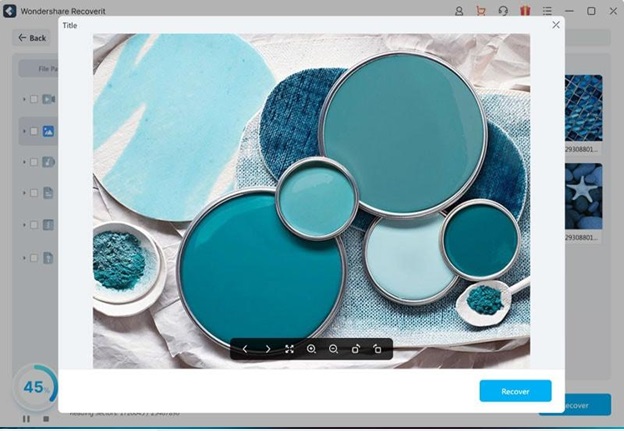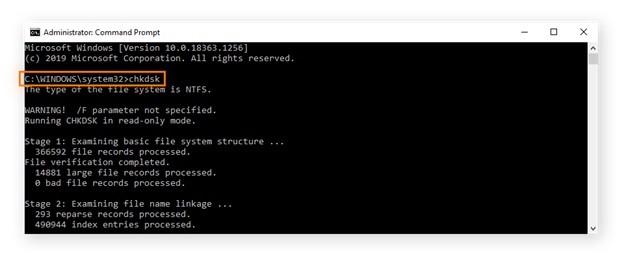
An external drive is a portable storage device that enables users to store and retrieve vast quantities of data, such as documents, images, movies, and music. It makes it straightforward to back up essential data and move files across devices. Despite their use, external hard drives are not immune to data loss.
Losing essential data from an external hard drive can be an unpleasant and stressful experience, particularly if the data is difficult to replace or recover. Fortunately, various disk recovery solutions are available to avoid data loss and recover erased information. This article will explore all the proper methods for external hard drive recovery. Let’s get started!
Common Causes of External Hard Drive Failures
External hard drives are useful devices for storing and accessing significant volumes of data. However, they are prone to various issues that might lead them to malfunction and destroy your data.
Here are some of the most prevalent reasons for external hard drive failures, as well as how they can influence your device:
- Physical damage: Dropping your external hard drive, spilling liquid, or exposing it to severe temperatures or humidity might harm the outside casing or the drive’s internal components. Therefore, your computer can not detect the drive, make unusual sounds, or not spin at all.
- Software issues: The issue might not always be with the hardware but with the software on your computer or external hard drive. For example, if you have a virus or malware infection, it might damage or prohibit you from accessing the contents on your disk. If your drivers are old or incompatible, you can encounter problems or poor performance while connecting your drive to your computer.
- Accidental deletion: Deleting or formatting the disk or its partitions is one of the most typical human mistakes that can lead to external hard drive failure. This can occur if you misidentify your external drive as another device, use a third-party program that wipes your disk, or press the incorrect button.
- Clicking or beeping noise: A clicking or beeping noise emanating from your external hard disk frequently indicates a mechanical breakdown. The phenomenon indicates that the head that reads and writes data on the drive’s platters is faulty or damaged. This can occur because of normal wear and tear, manufacturing flaws, power surges, or physical shocks.
- Malware: Malware is harmful software that can infect your computer or external hard drive and create a variety of difficulties. Some viruses will encrypt your data and demand payment to unlock it, but others can erase or change your files without your knowledge.
- Data corruption: Data corruption is the loss or change of data because of various circumstances, such as software faults, power outages, faulty sectors, incorrect shutdowns, or human mistakes. Individual files or whole partitions on your external hard drive might get corrupted, rendering them inaccessible or useless by your computer.
How To Recover Data From an External Hard Drive
Users have several options for recovering an external hard drive. This section discusses the one that best suits your situation and is most convenient.
Best External Hard Drive Recovery Software – Wondershare Recoverit
Wondershare Recoverit is one of the top external hard drive recovery software options. It is a robust and dependable program for recovering data from damaged, formatted, or destroyed external hard disks.
It supports over 1000 file types and can recover data from various conditions, including unintentional loss, virus attacks, system breakdown, power outages, etc. It also boasts a good recovery rate and a user-friendly UI.
Key Features of Wondershare Recoverit
Here are a few of its specifications and characteristics that you should know about:
- Recover data from external hard drives of all varieties, including HDD, SSD, USB flash drive, SD card, etc. More than 2000 storage devices are supported.
- Recover data from various file systems, including NTFS, FAT32, exFAT, HFS+, and APFS.
- Recover data from various situations, including the recovery of deleted files, the recovery of the recycle container, the recovery of formatted disks, etc. Supports 500+ different data loss scenarios.
- Recover various file categories, including photographs, videos, audio, documents, emails, and archives.
A Step-by-Step Guide to Recovering Data Using Recoverit
Let’s look at the step-by-step guide to external hard drive recovery using Wondershare Recoverit data recovery:
Step 1: Download and Install Recoverit on your computer by downloading it from the official website. Launch the application.
Step 2: In the program interface, select the external hard drive under External Devices from which you wish to recover deleted files, and the scanning process will start automatically.

Step 3: All found contents on the examined drive will be displayed in File Path in the window after scanning.

Step 4: You can view original file identifiers or preview some file types, such as vidoes, images and documents, to confirm whether it is the file you’re trying to recover. Click Recover to retrieve the selected files.

DIY External Hard Drive Fixes
Here are some of the DIY external hard drive fixes that you can try for yourself:
CHKDSK Command
This Windows command can check and repair errors on your external hard drive. To use it, follow these steps:
Step 1: In the Start menu’s search bar, enter cmd (Command Prompt), then select Run as administrator.
Step 2: Type chkdsk and press Enter.
Note: CHKDSK will scan for drive errors and notify you if any need to be repaired, but it will not attempt to correct them unless given explicit instructions.

First Aid – Disk Utility
This Mac utility can verify and fix external hard drive errors. Follow these steps to use:
Step 1: Connect your external hard drive to your Mac and ensure the system recognizes it.
Step 2: Launch Disk Utility from the Applications > Utilities folder.

Step 3: Choose your external hard drive from the sidebar and select the First Aid icon at the top of the page.
Step 4: To initiate the verification and repair process, click Run. This will scan for errors on your external hard drive and attempt to repair them.
Note: Check the functionality of your external hard drive after the process is complete.
Driver Update/Reinstallation
Sometimes, the issue with your external hard drive could result from outmoded or corrupt drivers on your computer. Follow these instructions to update or reinstall the driver software:
Step 1: Connect your external hard drive to your computer and ensure the system recognizes it.
Step 2: Press Win+X and then select Device Manager from the menu to launch the Device Manager.
Step 3: Right-click your external hard drive after expanding the Disk devices category. Choose Update Driver from the context menu.

Note 1: Follow the on-screen instructions to install the most recent driver for your external hard drive.
Note 2: If updating the driver does not work, you can attempt to delete and reinstall it. To accomplish this, right-click the external hard drive in Device Manager and choose Uninstall device from the context menu. Confirm the action, then resume the system. When you reconnect, Windows will automatically reinstall the driver for your external hard drive.
Assistance from External Hard Drive Recovery Service Provider
If none of the previous solutions work, or if your external hard drive is physically damaged, you might need to seek expert help from a supplier of external hard drive recovery services. These professionals have specific equipment and procedures for recovering data from damaged or inaccessible external hard drives.
Increase Chances of Recovering External Hard Drive
Data loss on an external hard drive can be a painful and stressful experience, but there are numerous actions you can take to improve your chances of retrieving lost data. Here are some preventative measures you can take to keep external hard drive data loss from becoming permanent:
- Don’t Delay: It’s critical to respond quickly if you discover data loss on your external hard disk. The longer you wait, the more probable the lost data will be overwritten or permanently lost. As a result, it’s critical to move promptly and begin the recuperation process as soon as feasible.
- Use the best software – Recoverit: To improve your chances of successful data recovery, choose dependable and effective software like Wondershare Recoverit. It’s a sophisticated tool with many scanning modes and innovative algorithms for recovering lost data from external hard disks. Using reputable software such as Recoverit can help you recover your data quickly and effectively.
- Prevent overwriting: Overwriting is a method of permanently erasing lost data from an external hard disk. Stop using the external hard drive when you detect data loss to avoid this. Save no new files or applications to the disk since this would overwrite the lost data and render it unrecoverable. Also, properly remove the external hard drive from the computer and keep it somewhere safe and dry until the recovery procedure is finished.
Conclusion
External hard drive recovery is critical for preventing data loss caused by various factors. They may include physical damage, unintentional deletion, virus, or data corruption. Properly managing and storing the external hard drive is essential to minimize data loss and avoid exposure to high temperatures, moisture, or physical damage.
In the event of data loss, acting quickly and utilizing a reputable recovery program such as Wondershare Recoverit might boost your chances of recovering the lost data. It is critical not to overwrite the data and to cautiously handle the external hard drive until the recovery procedure is complete.

